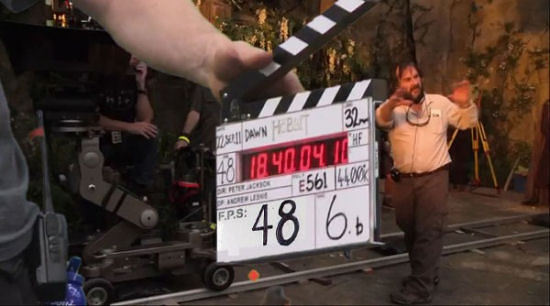Last year at this time, audiences were just getting their first look at the a film produced in the new, 48 frames per second high-definition format with The Hobbit: An Unexpected Journey. Some advance reviews were critical of the process but the public had yet to see the process for themselves. Would they embrace it and clamor for more films in the higher definition format? Would it lead to a revolution in the way that films are made? The future seemed ripe with possibilities and some thought that this first Hobbit film would be the harbinger of a major change in filmmaking technology.
And now, a year later as the second installment of director Peter Jackson’s The Hobbit trilogy, The Desolation Of Smaug, is hitting the screens… virtually nothing.
Outside of James Cameron, who is still trying to decide if he is going to shoot his Avatar sequels in 48-frames-per-second or the even faster 60-frames-per-second, no other director has announced that they were going to use the process for their own projects. The closest we’ve come is Bryan Singer briefly considering the process for the upcoming X-Men: Days Of Future Past before deciding to go with the more traditional 24-frames-per-second shooting speed. The only upcoming films utilizing the high frame rate process are Jackson’s remaining Hobbit films.
Was the public unimpressed with the process or did they just not care? In my own review of The Hobbit: An Unexpected Journey, I found that the HFR process gave mixed results. The outdoor location work looked stunning while the interior scenes looked like an overly-lit, lavishly-budgeted BBC production with the visual effects work hit or miss. And the same, unsurprisingly, holds true for the most part with the Desolataion Of Smaug, though things are a bot better on the visual effects side. The dragon Smaug is perhaps the strongest, most realistic creature to yet be realized through computer generated means, quite possibly crossing the uncanny valley. Now I will admit that the process does leave the 3D looking much crisper and, while admittedly anecdotal, some folks I know have stated that this one of the first times that they could actually see the 3D effects a film was going for.
But is it really a draw for the non-cinephile, average ticket buyer? It doesn’t appear to be. The HFR version of Desolation Of Smaug is set to open on nearly twice as many screens as the previous Hobbit film, but there has been nary a peep about that fact in any of the advance publicity for the film. (Plenty of mentions of how the film will be available in 3D, though.) The studio is also reportedly downplaying the HFR as they feel that it dominated critical discussion of the film to the point where the film itself was not given the due they thought it deserved.
It seems odd to me that in 12 months not one other filmmaker has come forward to say that they want to use the high frame rate process. The last time there was such a development in filmmaking technology, it was the conversion from using actual film cameras to digital ones. And while there was some initial reluctance at first to changing over from film to digital, once some of the big name directors started to do so, nearly everyone else fell in line behind them. Jackson is as big a name as they come, and yet there is no one clamoring to be the next one to go HFR.
Time will tell if HFR is indeed going to be the next step in moviemaking technology or if it will be consigned to film history as an interesting one-off experiment that was then placed onto the shelf next to Doug Trumbull’s 60-frame-per-second Showscan technology developed back in the 1980s. But give the lack of enthusiasm from Hollywood over HFR, I would not be surprised if it was the latter rather than the former.





So What’s Up With High Frame Rate? http://t.co/2jF47wNkMS
Steve Mattsson liked this on Facebook.